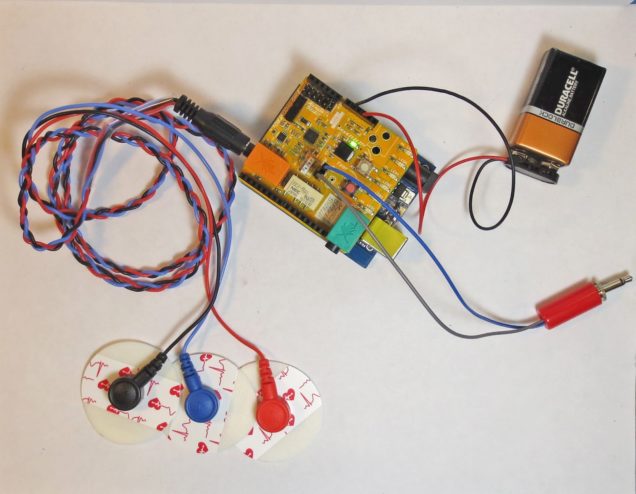sEMG-Based Switch Design
Design of an Electromyographic Switch for Communication System Access
Augmentative and alternative communication (AAC) systems provide patients with specialized methods to communicate when oral communication is not possible. However, some patients have insufficient motor control to access current AAC systems (e.g., via head-tracker, eye-tracker, button-style mechanical switch). This project delivers a device that directly replaces a mechanical switch for AAC operation by capturing muscle activity via surface electromyography (sEMG). It serves the subcategory of patients who possess volitional control over one or more muscle groups but lack the strength or coordination to activate a mechanical switch. The device uses the signal processing capabilities of an Arduino UNO equipped with sEMG-capable hardware and Arduino Software to amplify, filter, and smooth the signal from a patient’s voluntary muscle activity. A patient-specific threshold is used to determine the state of the switch and produce a binary output that matches that of an existing mechanical switch. This complete sEMG-based switch is provided with full documentation detailing instructions for sensor placement over any volitionally-controlled muscle group, calibration, operation, and maintenance procedures. The device design is modular and replicable with commercially-available parts and open-source software for use by any hospital or caregiver serving the target population.
The Stepp Lab for Sensorimotor Rehabilitation Engineering at Boston University and the Madonna Rehabilitation Hospital in Lincoln, Nebraska developed and supported this project. The device design and development were completed as a part of the Senior Design Capstone Project for an interdisciplinary team of Biomedical and Mechanical Engineering students: Victoria Frick (BME), Katherine Girouard (BME), and Evi Shiakolas (ME).
Click here to access the List of Components and Sources, Initial Device Assembly Instructions, and recommended Calibration Instructions for operation of the switch for communication system access.
Download the Software Setup Files here: sEMG_Switch_Program_Files.
Download the device’s housing CAD files here: Housing Files.
